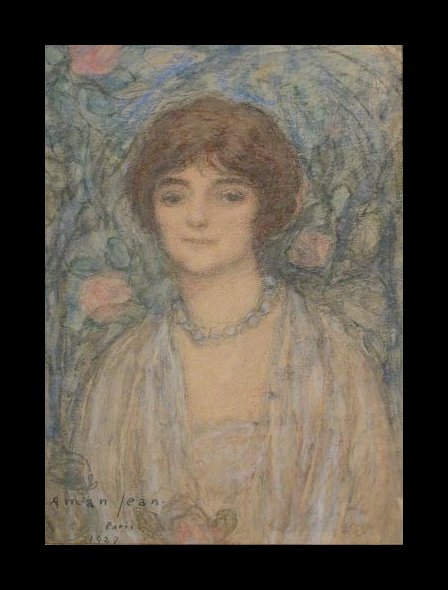Edmond Francois Aman-Jean (1860-1935)
Get a Edmond Francois Aman-Jean (1860-1935) Certificate of Authenticity for your painting (COA) for your Edmond Francois Aman-Jean (1860-1935) drawing.
For all your Edmond Francois Aman-Jean (1860-1935) artworks you need a Certificate of Authenticity (COA) in order to sell, to insure or to donate for a tax deduction.
Getting a Edmond Francois Aman-Jean (1860-1935) Certificate of Authenticity (COA) is easy. Just send us photos and dimensions and tell us what you know about the origin or history of your Edmond Francois Aman-Jean (1860-1935) painting or drawing.
If you want to sell your Edmond Francois Aman-Jean (1860-1935) painting or drawing use our selling services. We offer Edmond Francois Aman-Jean (1860-1935) selling help, selling advice, private treaty sales and full brokerage.
We have been authenticating Edmond Francois Aman-Jean (1860-1935) and issuing certificates of authenticity since 2002. We are recognized Edmond Francois Aman-Jean (1860-1935) experts and Edmond Francois Aman-Jean (1860-1935) certified appraisers. We issue COAs and appraisals for all Edmond Francois Aman-Jean (1860-1935) artworks.
Our Edmond Francois Aman-Jean (1860-1935) paintings and drawings authentications are accepted and respected worldwide.
Each COA is backed by in-depth research and analysis authentication reports.
The Edmond Francois Aman-Jean (1860-1935) certificates of authenticity we issue are based on solid, reliable and fully referenced art investigations, authentication research, analytical work and forensic studies.
We are available to examine your Edmond Francois Aman-Jean (1860-1935) painting or drawing anywhere in the world.
You will generally receive your certificates of authenticity and authentication report within two weeks. Some complicated cases with difficult to research Edmond Francois Aman-Jean (1860-1935) paintings or drawings take longer.
Our clients include Edmond Francois Aman-Jean (1860-1935) collectors, investors, tax authorities, insurance adjusters, appraisers, valuers, auctioneers, Federal agencies and many law firms.
We perform Edmond Francois Aman-Jean art authentication, appraisal, certificates of authenticity (COA), analysis, research, scientific tests, full art authentications. We will help you sell your Edmond Francois Aman-Jean or we will sell it for you.
Born in Chevry-Cossigny, France, Aman studied under Henri Lehmann at the Ecole des Beaux-Arts in Paris. Aman became friends with Pointillist painter Georges Seurat, as well as poets Mallarmé and Verlaine, and in 1886, traveled to Rome on a study scholarship.

Aman is best-known for his paintings and prints of “ladies of luxury.” A typical Aman scene consists of a beautiful French woman of the bourgeois class, reclining and gazing into space.
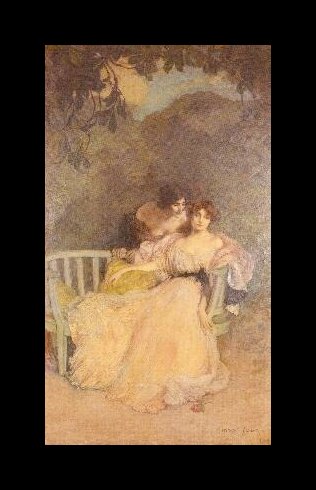
Though Aman was surrounded by the avant-garde movement through his friends and contemporaries, he retained a fairly classical style. Though not quite an Impressionist, leaning more towards Classical styling, Aman embraced the importance of color and brushstrokes. He was known for his undulating brush strokes in his oil and canvas works, which would give his painting a grainy but fluid feel.
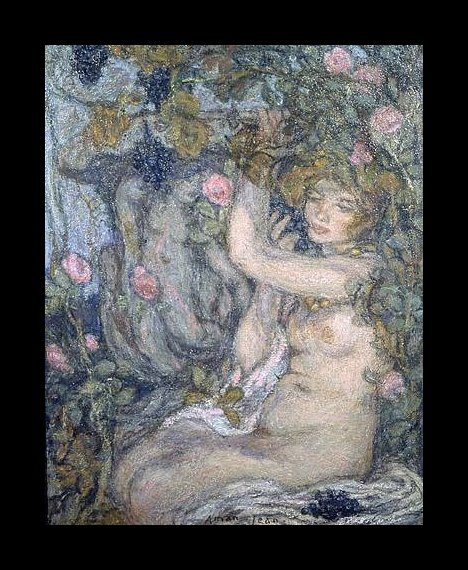
In many of his compositions, Aman’s palette takes on a distinctly rosy hue, certainly in an effort to complement his female subjects.
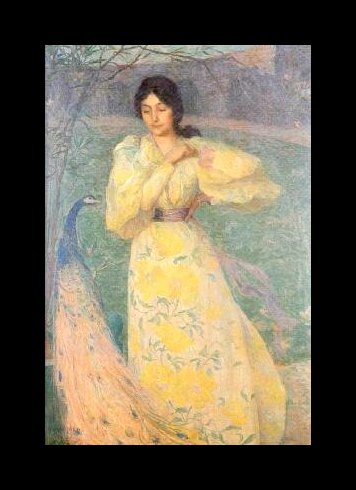
Aman was also well-known for being a pastellist; particularly, an artist who uses ground pigments in crayon form to sketch pictures. He would also be commissioned to create decorative panels, such as the ones he did for the Musée des Arts Décoratifs and the Sorbonne.
Like many other turn-of-the-century French artists, Aman also tried his hand at poster art. One of his most notable poster prints, entitled “Beatrix”, depicts the rose and the cross, a particularly popular religious theme of the era, and was, in fact, created for the Salons de la Rose Cross.
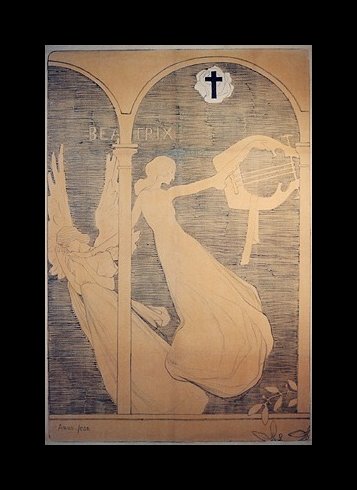
One thing that may make authenticating a piece of art by Aman difficult is his inconsistency in style and method. Unlike some of his other contemporaries like Monet, Renoir or Degas, Aman does not have a signature style or method of his own that is easily noted. He also was not consistent about where he placed his signature and date—sometimes on the back of his paintings, and other times, directly on the front like this painting “Portrait of a Woman”, 1927.
